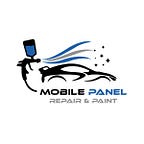6 Different Types of Car Dents and How to Easy Fix Them
Car dents are a common issue for vehicle owners. Whether from a minor bump, a collision, or the wrath of mother nature, these imperfections can mar the appearance of your vehicle. Understanding the types of car dents and knowing how to fix them can save you time and money, while also keeping your car looking its best. In this article, we will explore six different types of car dents and provide some straightforward tips on how to repair them.
Types of Car Dents and Easy Fixes
Car dents are a common issue for vehicle owners. Whether from a minor bump, a collision, or the wrath of mother nature, these imperfections can mar the appearance of your vehicle. Understanding the types of car dents and knowing how to fix them can save you time and money, while also keeping your car looking its best. In this article, we will explore six different types of car dents and provide some straightforward tips on how to repair them.
1. Round Dents
Round dents are typically the result of objects like balls, hailstones, or other spherical items hitting the car. These are usually shallow and have no sharp edges, making them one of the easier types of dents to repair. A popular DIY method for fixing round dents is using a plunger. Simply wet the plunger and the dent, press the plunger firmly against the dent, and pull. Often, the suction can pop the dent back into place without needing professional intervention.
2. Crease Dents
Crease dents are typically the result of an object striking the car and dragging along it, such as when a bike handle scrapes across the side of the vehicle. These dents can be more challenging to repair because they deeply affect the metal. It’s often necessary to use a pulling technique to fix a crease dent. This involves using a dent-pulling tool, where you glue a pulling tab to the deepest part of the dent and then pull it out with a slide hammer. This process may need to be repeated and followed by some sanding and painting to restore the area fully.
3. Sharp Dents
Sharp dents are small but deep dents, often the result of high impact with a concentrated point, such as the corner of another car’s bumper or a large stone hitting the surface. Repairing sharp dents can be challenging due to their depth and small surface area. When it comes to Car Bumper Repair, where sharp dents are common, professionals frequently turn to a method known as paintless dent repair (PDR). This technique involves using specialised tools to carefully massage the backside of the dent until it returns to its original position. For those inclined to DIY, a similar approach can be attempted with smaller tools tailored for car bumper repair, though it’s crucial to proceed with caution to avoid stretching the metal or damaging the paint.
4. Swelling Dents
Swelling dents are large, bloated areas where the metal has stretched due to a high-impact collision. These are often seen in accidents where a car hits or is hit by another large object. Swelling dents are complex because they involve a stretch in the metal, making them difficult to repair perfectly without professional help. Heating the metal and then using a combination of pushing and pulling techniques can sometimes reduce the appearance of swelling, but professional services are usually recommended to restore the structural integrity of the panel.
5. Dinged Edges
Dinged edges occur on the doors or fenders, often as a result of opening the door onto another car or a hard surface like a garage wall. These dents can vary in severity but generally involve a bend in the edge of the door or fender, complicating the Car Body Repair process. Repairing a dented edge often requires using a hammer and dolly to gently beat the metal back into shape. This is a delicate process as it involves working near the edges, where the metal can easily be stretched or torn.
6. Multi-Point Dents
Multi-point dents occur when an object impacts the surface of the car at several points simultaneously, such as debris during a storm or a car accident involving multiple angles. These are complex and typically require professional assessment. However, techniques like PDR and using a combination of pulling methods can be attempted for smaller, less severe multi-point dents.
Conclusion
Understanding the different types of Car Dent Repair and knowing some basic repair techniques can greatly assist car owners in maintaining their vehicle’s appearance. While many minor dents can be addressed with DIY solutions, significant damage often requires the expertise of a professional. Regular maintenance and careful driving can help minimize the risk of dents, but when they do occur, a calm approach and the right tools are key to fixing them.
Detailed Tips
Always assess the damage thoroughly before attempting any repairs and consult a professional if the dent’s severity is beyond simple DIY methods. Regular washing and detailing of your vehicle not only keep it looking great but also make it easier to spot and address dents before they lead to further issues like rust or paint damage. Remember, preserving your car’s appearance is not just about aesthetics but also about maintaining its value and longevity.
